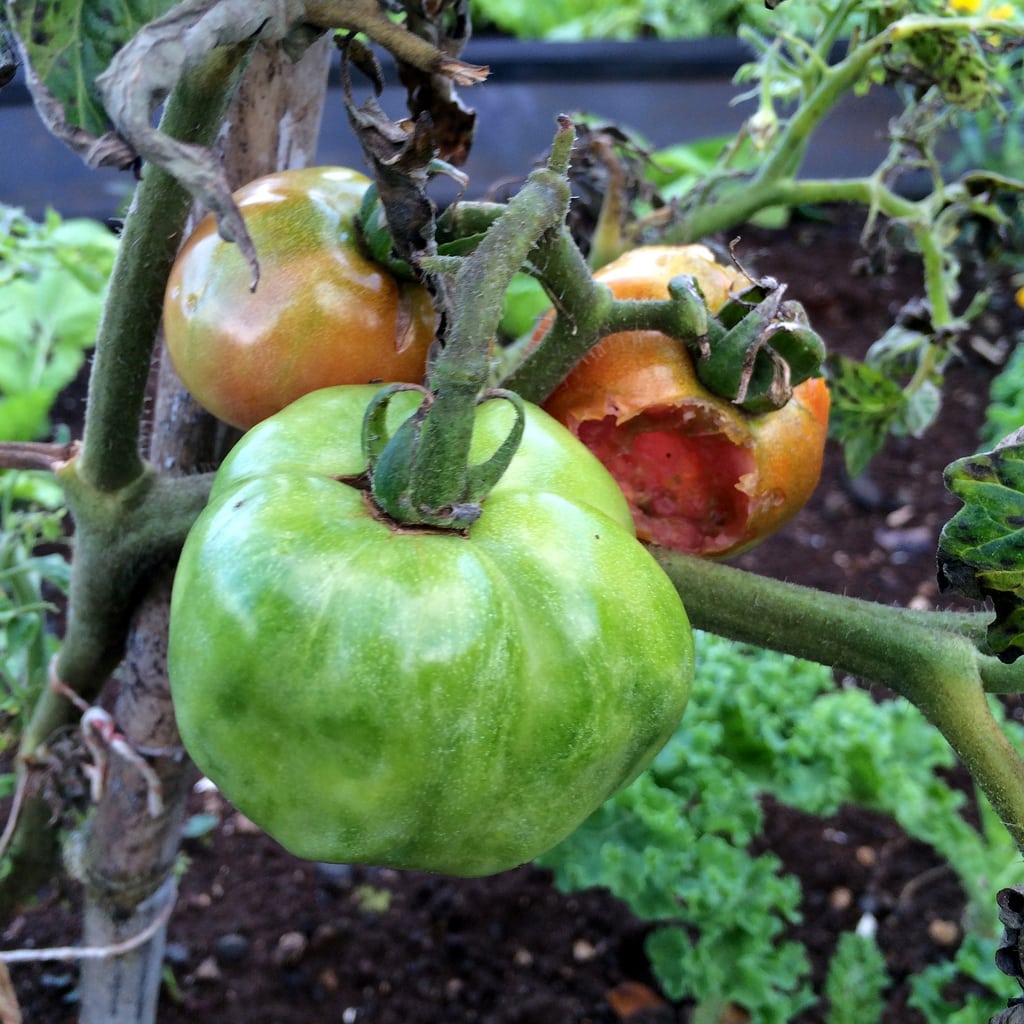Tomato Spotted Wilt Virus: Treating Tomatoes With Spotted Wilt Virus


Spotted wilt in tomato was first discovered in Australia more than a century ago and was eventually determined to be a viral disease transmitted by thrips. Since that time, it has spread to countries around the world. Read on to learn about tomato spotted wilt treatment.
Symptoms of Tomato Spotted Wilt Virus
Tomato spotted wilt virus affects hundreds of plant species. In the United States, spotted wilt in tomato has done significant damage in several southern states, including Mississippi, Arkansas, Louisiana, Tennessee, and Georgia. Early symptoms of tomatoes with spotted wilt virus can vary, but typically, diseased leaves turn brown or coppery purple, with small, pale brown spots. Plants are stunted and the leaves look wilted or crumpled and may curl downward. Spotted wilt in tomato may cause blotches, spots, and bumps on the fruit, often morphing into concentric rings of brown or yellow. Shape of the fruit may be stunted and distorted.
Controlling Spotted Wilt in Tomatoes
Unfortunately, there is no treatment for tomatoes with spotted wilt virus once the plants are infected. However, you can minimize the damage. Here are a few tips for controlling spotted wilt in tomato plants: Plant disease-resistant tomato varieties. Purchase tomatoes from reputable nurseries or greenhouses that take steps to manage thrips. Reduce the thrip population. Monitor your garden for the pests, using yellow or blue sticky traps. Insecticidal soap sprays and horticultural oils are relatively safe but must be applied to all plant surfaces, including the undersides of leaves. Repeat treatments are usually necessary. Pesticides are of limited effectiveness against thrips, but if you want to give it a try, products containing Spinosad may be less likely to harm populations of pirate bugs, green lacewings, and other beneficial insects that prey on thrips. To protect bees, don’t spray plants that are flowering. Keep weeds and grass in check; they can serve as hosts for thrips. Consider removing young tomato plants at the earliest signs of symptoms. Remove infected plant material and dispose of it properly. Destroy all infected plants after harvest.
Gardening tips, videos, info and more delivered right to your inbox!
Sign up for the Gardening Know How newsletter today and receive a free copy of our e-book "How to Grow Delicious Tomatoes".

A Credentialed Garden Writer, Mary H. Dyer was with Gardening Know How in the very beginning, publishing articles as early as 2007.
-
 Get Ready For A Summer Of Hummers! Grow These Full Sun Hummingbird Plants and Flowers
Get Ready For A Summer Of Hummers! Grow These Full Sun Hummingbird Plants and FlowersIf you’re lucky enough to enjoy a sunny backyard, make sure you are maxing out on your pollinator opportunities and grow these full sun hummingbird plants and flowers
By Tonya Barnett
-
 12 Lush Alternatives To A Lawn For Sustainable Spaces
12 Lush Alternatives To A Lawn For Sustainable SpacesAlternatives to a lawn are beautiful and also beneficial to your local ecosystem and its pollinators. Explore our top picks for plants to replace grass.
By Tonya Barnett